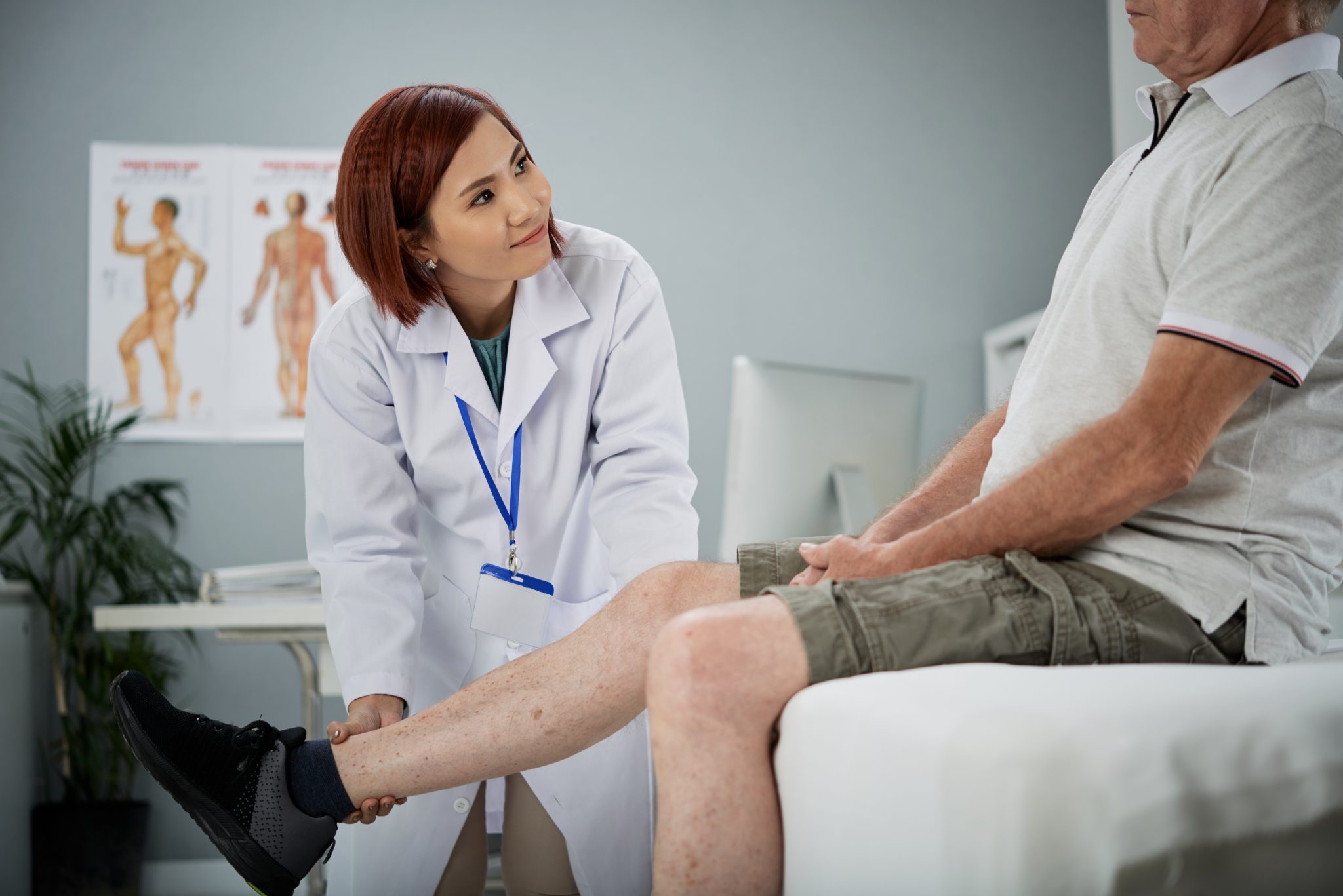Deep Vein Thrombosis Symptoms
The most common appearance of the Deep Vein Thrombosis is when a deep blood clot forms in the veins of the body, found majorly in the legs. It can occur without any apparent symptoms, but some common symptoms might include swelling or leg pain. It has to do a lot with how your blood clots and the medical conditions you have. Deep vein thrombosis can also occur if you are bedridden or haven’t moved your body for a long time due to a bad accident. Sometimes you are unable to move a specific part of your body after surgery, so this too can cause deep vein thrombosis.
Deep Vein Thrombosis can be severe and dangerous because the blood clots can break down, become loose, travel in your bloodstream, and reach the lungs. They will then block or disrupt the flow of blood, which can be deathly.
Symptoms of Deep Vein Thrombosis Symptoms
Some of the symptoms of Deep Vein Thrombosis include:
- Heavy swelling in the legs.
- Leg pains start from the calf leading to cramping as well as soreness in the legs.
- Feeling the warmth in the leg which is affected.
- Discoloring of the skin on the leg or the appearance of an unusual red color.
Some common, severe symptoms of this disease include:
- Feeling out of breath frequently.
- Pain in the chest, difficulty in breathing, and having severe pain in the chest at the time of breathing or coughing.
- Feeling dizzy, lethargic, unconscious, or lightheaded.
- Having an unusually rapid pulse.
- Blood coming in the cough.
When to see the doctor?
It is crucial to be alert when you find out that you are having some symptoms of deep vein thrombosis symptoms. This is because it can be cured in the initial stages, but if you ignore these symptoms, it can be quite dangerous, and your health might deteriorate.
You need to find out when should you visit the doctor and get yourself treated. As soon as you get any of these symptoms, you should go and visit your doctor. Precaution is always better than treatment.
The causes of Deep Vein Thrombosis Symptoms
Now that we haveread the symptoms of deep vein thrombosis, we should also have a look at the causes of this disease to avoid it. The causes of deep vein thrombosis can be anything that makes your blood clot, for instance, any injury to the vein, having surgery, the use of some specific medications as well as not moving your body or being bedridden.
Some risk factors which increase the chances of developing Deep Vein Thrombosis
Numerous factors increase the chances of developing this disease, and it is vital to find out what are they so that you may refrain from them. These include:
- Inheriting a blood clotting disorder: some people face the problem of blood clots faster than many others around them. This is because they have inherited it through their genes.
- Being confined to the bed for too long, bedridden, paralysis or a prolonged stay in hospital can contribute to the problem. If your leg remains in one place without any movement for a very long period, the blood muscles will not circulate, and so it will increase the chances of getting blood clots.
- Surgery and injury: any kind of damage or operation of the veins speeds up the chances of a blood clot.
- Pregnancy: When a woman is pregnant, there is a lot of pressure in the veins of the legs and pelvis. This is due to the increased body weight and can stay up to 6 weeks even after delivering the baby.
- Birth control pills or hormone replacement surgery: birth control pills, as well as hormone replacement therapy, greatly increases the chances of getting blood clots.
- Obesity and overweight: since being overweight and obese increases the pressure on the legs and pelvis, there is a massive chance of getting blood clots.
- Smoking: smoking causes clotting of the blood as well as hinders the smooth circulation of the blood, which is why there is a high risk of getting Deep Vein thrombosis.
- Cancer: some types of cancer increase the substances in the blood, which thereby cause clotting of the blood.
- Age: age is another cause for DVT as people aged 60 or above are more prone to getting it, although it can occur at any age to any person.
- Sitting in one place for a long time: traveling on long distances and sitting in one position, for instance, on the plane stops the contraction of the muscles, which thereby leads to clotting of the blood.
- Bowel disease: bowel diseases are also one of the causes of getting DVT disease.
- People who have a family history of deep vein thrombosis can also suffer from it no matter they have these symptoms or not. So a person who has a strong history of this disease might get blood clots at any age, and they are at a higher risk of getting it than any other person.
How to avoid Deep Vein Thrombosis?
The best way to avoid DVT is by being active, to make sure to not sit in one place for too long a period. This is more important if you have just had surgery, or have been ill so you should start physical movement as soon as you can. Walk around if you have sat for a while to avoid this problem.
You should also eat healthily, try to lose weight, and stop smoking if you do it regularly. Apart from this, regular exercising is also vital as it lowers down the risk of getting blood clots.
For further help and information on DVT, feel free to contact or visit the South Florida CardioVascular Specialists. Our experts will guide you with all the information and help you need.





